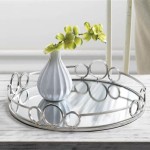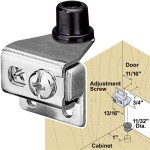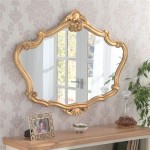What is Mirror Polished Stainless Steel?
Mirror polished stainless steel describes a type of stainless steel that has undergone a specialized polishing process to achieve a highly reflective, mirror-like surface finish. This finish is not simply decorative; it also provides functional benefits, making it a popular material choice across various industries. Understanding the process, properties, and applications of mirror polished stainless steel is essential for selecting the appropriate material for specific projects.
The term "mirror polish" refers to a level of surface smoothness achieved through a series of abrasive polishing steps. The process aims to eliminate surface imperfections, such as scratches, grinding marks, and other irregularities, resulting in a highly reflective surface. The reflection clarity is often evaluated based on a visual inspection comparing it against a standard mirror.
Stainless steel's inherent corrosion resistance, coupled with the enhanced smoothness of a mirror polish, contributes to its longevity and ease of maintenance. The smooth surface reduces the adherence of dirt, grime, and other contaminants, making cleaning simpler and preventing the build-up of potentially corrosive substances. This is particularly important in hygienic environments like food processing and medical facilities.
Several stainless steel grades can be mirror polished, including 304, 316, and 430. The choice of grade depends on the specific application requirements, considering factors such as corrosion resistance, strength, and weldability. Each grade offers a distinct set of properties, and the polishing process further enhances their performance and aesthetic appeal.
The Mirror Polishing Process
The creation of mirror polished stainless steel is a multi-stage process involving sequential abrasion with increasingly finer grits, followed by buffing to achieve the final reflective finish. The initial stages focus on removing imperfections from the raw material, while the later stages refine the surface to the desired level of smoothness and reflectance.
The process typically starts with grinding, which removes significant surface irregularities. This step is often performed using coarse abrasive belts or wheels. The goal is to quickly level the surface and eliminate deep scratches or imperfections introduced during the manufacturing of the stainless steel sheet or component.
Following grinding, polishing with progressively finer abrasive materials begins. This involves using abrasive belts, discs, or compounds with decreasing grit sizes. Each subsequent polishing step removes the scratches left by the previous coarser grit, gradually refining the surface finish. The process might involve multiple polishing stages, each using a finer abrasive than the last.
Buffing is the final stage of the mirror polishing process. It involves using soft wheels or pads, typically made of cotton or felt, along with polishing compounds containing very fine abrasive particles. Buffing further enhances the surface smoothness and imparts the high level of reflectivity characteristic of a mirror polish. The selection of the appropriate buffing compound and wheel material is crucial for achieving the desired finish without introducing new scratches or imperfections.
Electropolishing, also known as electrochemical polishing, can be used as an alternative or supplementary method. This process uses an electrolytic solution to remove a thin layer of metal from the surface, resulting in a smooth, corrosion-resistant finish. While electropolishing doesn't create the same level of reflectivity as mechanical polishing, it can be a useful method for complex shapes or internal surfaces that are difficult to access with traditional polishing tools.
Quality control is an integral part of the mirror polishing process. Throughout the process, the surface finish is regularly inspected to ensure that it meets the required specifications. This may involve visual inspection, surface roughness measurements, and reflectivity testing. Any imperfections identified during inspection are addressed through additional polishing or buffing.
Advantages of Mirror Polished Stainless Steel
Mirror polished stainless steel offers a range of advantages beyond its aesthetic appeal. The highly reflective surface and enhanced smoothness contribute to improved corrosion resistance, ease of cleaning, and hygienic properties. These benefits make it a preferred material in applications where both performance and appearance are critical.
The primary advantage is enhanced corrosion resistance. The smooth, non-porous surface minimizes the adherence of corrosive agents, preventing them from attacking the underlying metal. This is particularly important in environments where the stainless steel is exposed to harsh chemicals, saltwater, or other corrosive substances. The mirror polish effectively reduces the available surface area for corrosion to initiate and propagate.
Another significant benefit is its ease of cleaning. The smooth surface prevents dirt, grime, and other contaminants from adhering to the material. This makes cleaning simple and efficient, reducing the time and effort required to maintain a clean and hygienic surface. This is especially crucial in industries such as food processing, pharmaceuticals, and healthcare, where cleanliness is paramount.
The mirror polished surface also contributes to improved hygiene. The reduced surface roughness inhibits the growth of bacteria and other microorganisms. This is vital in applications where contamination must be minimized, such as medical equipment, food preparation surfaces, and pharmaceutical manufacturing. The smooth surface is easier to sterilize and disinfect, further reducing the risk of microbial contamination.
The high reflectivity of mirror polished stainless steel can also be advantageous in certain applications. For example, in lighting fixtures, the reflective surface can enhance light output and distribution. In architectural applications, it can create visually striking effects by reflecting light and surrounding elements. The reflective properties can also improve visibility in certain industrial settings.
Aesthetically, mirror polished stainless steel offers a clean, modern, and sophisticated look. Its reflective properties can be used to create a sense of spaciousness and brightness. It is often used in architectural design, interior decoration, and consumer products where visual appeal is important.
Applications of Mirror Polished Stainless Steel
The unique properties of mirror polished stainless steel make it suitable for a wide array of applications across various industries. Its combination of corrosion resistance, ease of cleaning, and aesthetic appeal makes it a versatile material choice for diverse needs. From architectural facades to medical instruments, its applications are extensive.
In architecture, mirror polished stainless steel is used for cladding, facades, and decorative elements. Its reflective surface creates visually striking effects and enhances the building's overall aesthetic appeal. It is often used in high-profile projects where a modern and sophisticated look is desired. The material's durability and corrosion resistance also ensure long-term performance in outdoor environments.
Within the food processing industry, it is commonly used for food preparation surfaces, storage tanks, and processing equipment. Its hygienic properties and ease of cleaning are essential for maintaining food safety standards. The smooth surface prevents the build-up of bacteria and other contaminants, reducing the risk of foodborne illnesses. Its resistance to corrosion from food acids and cleaning chemicals further contributes to its suitability for this industry.
The pharmaceutical sector also relies on mirror polished stainless steel for manufacturing equipment, storage containers, and cleanroom environments. The material's high level of cleanliness is crucial for preventing contamination of pharmaceutical products. Its ability to withstand harsh cleaning agents and sterilization processes makes it ideal for maintaining the stringent hygiene requirements of the pharmaceutical industry.
Medical devices and surgical instruments also frequently use mirror polished stainless steel. Its smooth surface and corrosion resistance make it biocompatible and easy to sterilize. The reflective finish also allows for better visibility during surgical procedures. Its durability ensures that the instruments can withstand repeated sterilization cycles without degradation.
In the automotive industry, mirror polished stainless steel is used for decorative trim, exhaust components, and other exterior parts. Its corrosion resistance and aesthetic appeal enhance the vehicle's appearance and longevity. The material's ability to withstand exposure to harsh weather conditions and road salts makes it suitable for automotive applications.
It finds applications in consumer appliances, such as refrigerators, dishwashers, and ovens. Its aesthetic appeal and ease of cleaning make it a popular choice for these products. The material's durability ensures that the appliances can withstand daily use and maintain their appearance over time. Its resistance to corrosion from food spills and cleaning agents further contributes to its suitability for these applications.
In these diverse applications, mirror polished stainless steel consistently delivers a combination of performance, hygiene, and aesthetic appeal, making it a valuable material for numerous industries.

Mirror Polished Stainless Steel Sheets High Gloss Finish

Mirror Polished Stainless Steel Sheets High Gloss Finish

Mirror Polished Stainless Steel Sheets High Gloss Finish

No 8 Super Mirror Polished Stainless Steel Sheet Stanch Company

Differences In The Appearance Of Stainless Steel Mirror Finish Design Metal Library

How To Give Stainless Steel The Right Mirror Finish Thepipingmart Blog

Mirror No 8 8k Finish Stainless Steel Sheets Manufacturers Supplier

Differences In The Appearance Of Stainless Steel Mirror Finish Design Metal Library

A Guide To Stainless Steel Polishing Finishes

Super Mirror Polished Tube Handrail Metal Hardware








